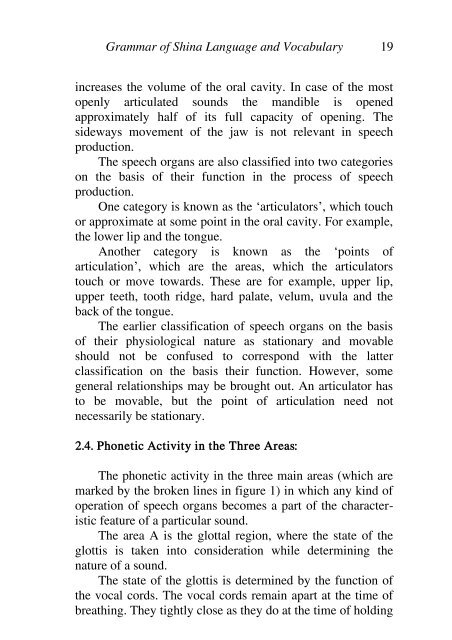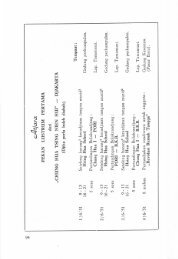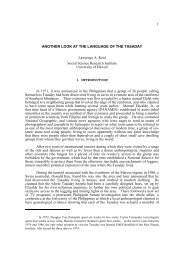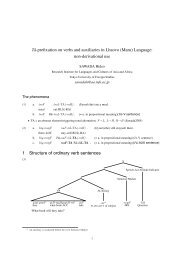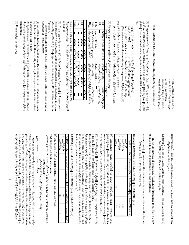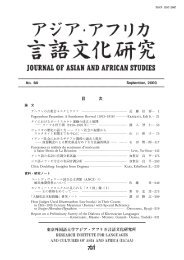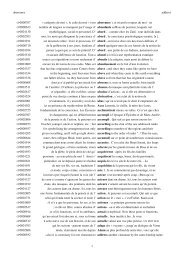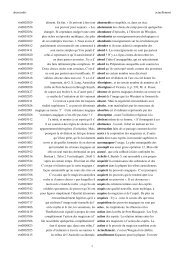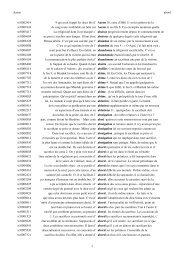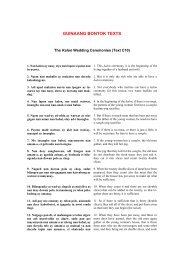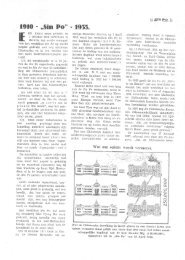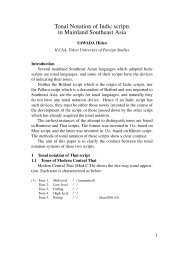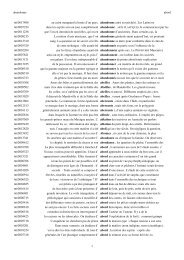Grammar of Shina Language And Vocabulary
Grammar of Shina Language And Vocabulary
Grammar of Shina Language And Vocabulary
- No tags were found...
You also want an ePaper? Increase the reach of your titles
YUMPU automatically turns print PDFs into web optimized ePapers that Google loves.
<strong>Grammar</strong> <strong>of</strong> <strong>Shina</strong> <strong>Language</strong> and <strong>Vocabulary</strong> 19increases the volume <strong>of</strong> the oral cavity. In case <strong>of</strong> the mostopenly articulated sounds the mandible is openedapproximately half <strong>of</strong> its full capacity <strong>of</strong> opening. Thesideways movement <strong>of</strong> the jaw is not relevant in speechproduction.The speech organs are also classified into two categorieson the basis <strong>of</strong> their function in the process <strong>of</strong> speechproduction.One category is known as the `articulators’, which touchor approximate at some point in the oral cavity. For example,the lower lip and the tongue.Another category is known as the `points <strong>of</strong>articulation’, which are the areas, which the articulatorstouch or move towards. These are for example, upper lip,upper teeth, tooth ridge, hard palate, velum, uvula and theback <strong>of</strong> the tongue.The earlier classification <strong>of</strong> speech organs on the basis<strong>of</strong> their physiological nature as stationary and movableshould not be confused to correspond with the latterclassification on the basis their function. However, somegeneral relationships may be brought out. An articulator hasto be movable, but the point <strong>of</strong> articulation need notnecessarily be stationary.2.4. Phonetic Activity in the Three Areas:The phonetic activity in the three main areas (which aremarked by the broken lines in figure 1) in which any kind <strong>of</strong>operation <strong>of</strong> speech organs becomes a part <strong>of</strong> the characteristicfeature <strong>of</strong> a particular sound.The area A is the glottal region, where the state <strong>of</strong> theglottis is taken into consideration while determining thenature <strong>of</strong> a sound.The state <strong>of</strong> the glottis is determined by the function <strong>of</strong>the vocal cords. The vocal cords remain apart at the time <strong>of</strong>breathing. They tightly close as they do at the time <strong>of</strong> holding


